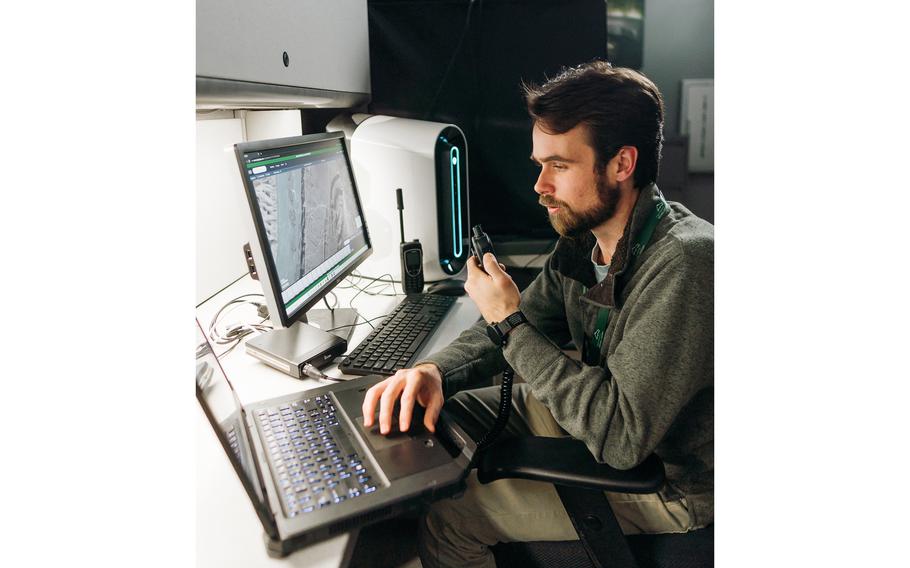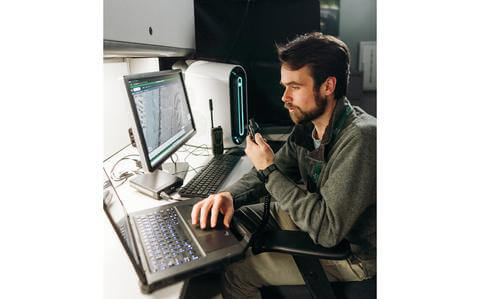
Hayden Bassett inside the Cultural Heritage Monitoring Lab at the Virginia Museum of Natural History. (Virginia Museum of Natural History)
In the southwest corner of rural Virginia, about 5,000 miles from the war zone, a small but mighty team of archaeologists, historians and high-tech mapping experts are using sophisticated satellite imagery to help to protect Ukraine’s cultural heritage.
Housed in the Virginia Museum of Natural History, the Cultural Heritage Monitoring Lab is the museum world’s version of a war room: a network of computers, satellite feeds and phones that represents one of the newest tools being employed to protect national treasures threatened by natural disasters or geopolitical events.
Created last year in partnership with the Smithsonian Institution Cultural Rescue Initiative – a world leader in this field – the lab is compiling imagery of Ukraine’s cultural sites to help track attacks on them. The goal is to quickly alert officials in Ukraine of damage, in case action can be taken – perhaps to protect artifacts exposed to the elements, or to board up stained-glass windows in the wake of a direct hit on a church – and to document the devastation.
“It’s a 24/7 operation,” director and archaeologist Hayden Bassett said, adding that the staff of six has been working 12 and 18 hours at a stretch to maintain their rapid response. “Even though we might not be staring at a screen at 3 a.m., our satellites are imaging at 3 a.m.”
Using their database of 26,000 cultural heritage sites – including historic architecture, cultural institutions such as museums and archives, houses of worship and places of archaeological significance – Bassett and his team of art historians, analysts and techies have identified several hundred potential impacts in the conflict’s first few…

